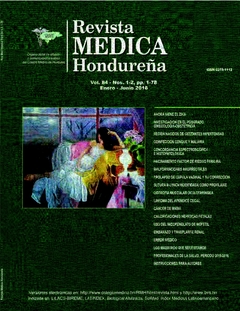Anorectal Malformations: diagnosis and treatment. A five years experience. Honduras
Keywords:
Congenital Abnormalities, Colostomy, Anus, ImperforateAbstract
Introduction: Anorectal malformations (ARM) are a spectrum of rare disorders of the rectum and anus, with variable anatomy and unpredictable long-term outcomes. The aim of this study was to retrospectively review the classification, diagnosis and surgical experience of anorectal malformations. Material and methods: We included in this study all patients with anorectal malformations born in the period 2010-2015. Results: A series of 70 children was enrolled in this study, comprising 31 male and 39 female. In the male patients, 38.71%(12) had perineal fistulas, 25.81% (8) had urethral fistulas, and 25.81% (8) had recto-bladder neck fistulas, without a fistula 9.68% (3). In the female patients, 7.69%(3) had perineal fistulas, 61.54% (24) had rectovestibular fistulas. Five patients did not have a fistula (12.82%). Associated anomalies were present in 35.71%(25) patients, and most associated anomalies were genitourinary and cardiovascular. Postoperative complications were related to PSARP in 40% (9.3%) patients. There was no mortality. Discussion: anorectal malformations in the neonatal stage can encompass a wide spectrum of associated malformations, affecting both boys and girls. Significant advances have occurred in the management of anorrectal malformations, yet many patients still have technical, frequently catastrophic, operative complications that are potentially avoidable.
Downloads
747




